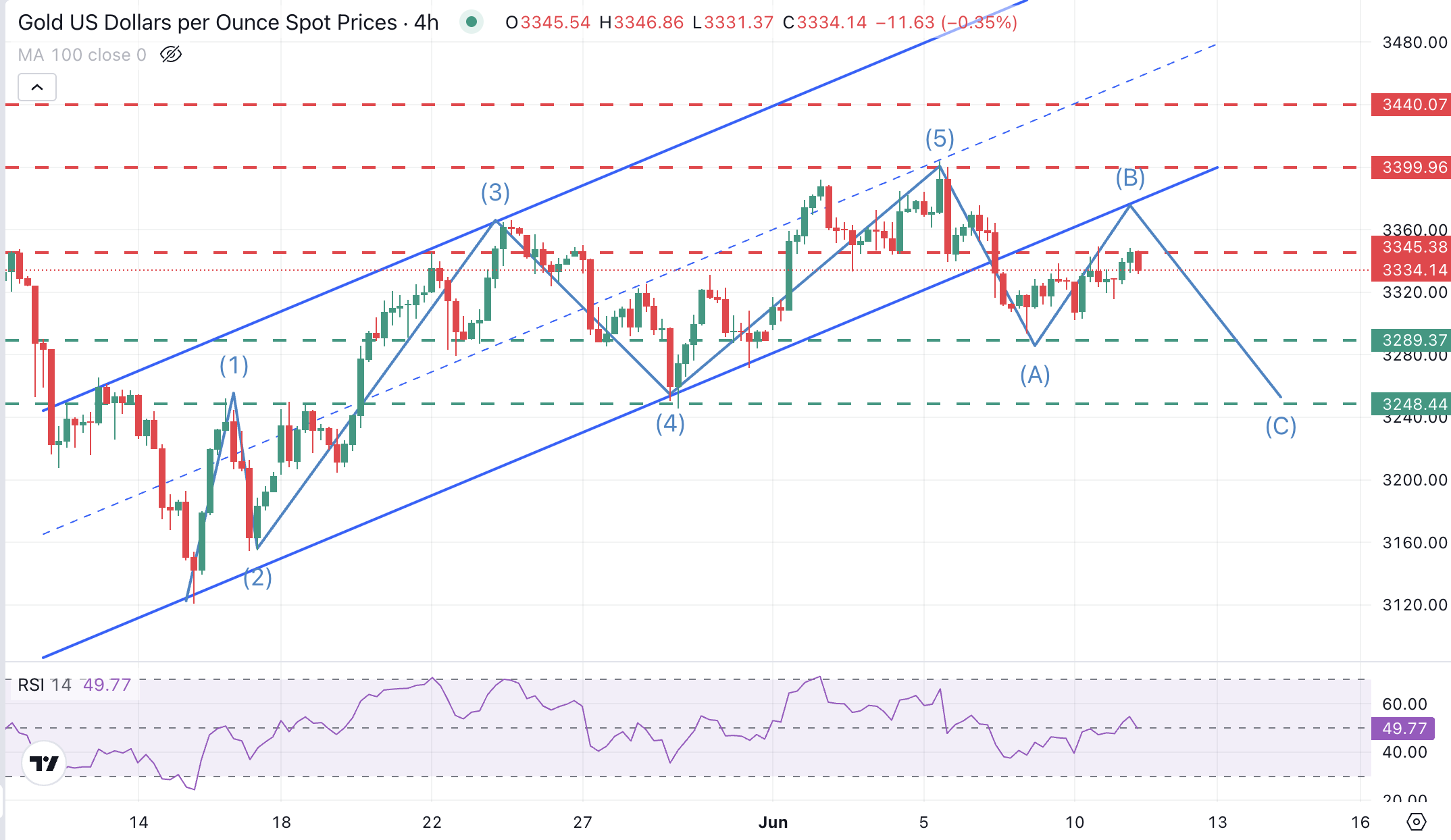Gold Price Forecast: XAU/USD resistance at $3,345 is holding bulls for now
- Gold posts moderate gains as the US Dollar retreats across the board.
- Investors are cautious of holding large US Dollar longs ahead of the US CPI release.
- XAU/USD is on a bearish correction from last week's high, at $3,400.
Gold (XAU/USD) is trading higher on Wednesday following some hesitation on Tuesday. The sceptical market reaction to the US-China trade deal and investors’ cautious mood ahead of the US CPI release are supporting the precious metal, which, nevertheless, is struggling to extend gains past the $3,345 area.
The US and China agreed on a “framework” for a deal to de-escalate their trade tensions and return to the last month's Geneva consensus. The scarce details of the deal, however, have raised speculation about its durability, which explains the tepid market reaction to the news.
The focus now is on the US Consumer Prices Index data, due later today, that might confirm the inflationary impact of Trump’s tariffs. The risk is on an upside surprise that might bring deflation fears back to the table and increase bearish pressure on the USD.
Technical analysis: XAU/USD remains in a bearish correction from $3,400
From a technical standpoint, the pair is consolidating losses following a bearish correction from $3,400 last week. Price action is showing “inside days” within Friday’s trading limits, with the 4-Hour RSI flat near the 50 level.
An Elliott Wave analysis would suggest that we are on an A-B-C correction, following the completion of a bullish cycle last week. The current upward leg (A-B leg) might extend beyond the mentioned $3,345 resistance to test the reverse trendline, now at $3,375, before extending lower.
On the downside, supports are at the June 9 low, $3,290, and the May 15 and 19 highs, and May 29 lows at $3,245.
XAU/USD 4-Hour Chart

Gold FAQs
Gold has played a key role in human’s history as it has been widely used as a store of value and medium of exchange. Currently, apart from its shine and usage for jewelry, the precious metal is widely seen as a safe-haven asset, meaning that it is considered a good investment during turbulent times. Gold is also widely seen as a hedge against inflation and against depreciating currencies as it doesn’t rely on any specific issuer or government.
Central banks are the biggest Gold holders. In their aim to support their currencies in turbulent times, central banks tend to diversify their reserves and buy Gold to improve the perceived strength of the economy and the currency. High Gold reserves can be a source of trust for a country’s solvency. Central banks added 1,136 tonnes of Gold worth around $70 billion to their reserves in 2022, according to data from the World Gold Council. This is the highest yearly purchase since records began. Central banks from emerging economies such as China, India and Turkey are quickly increasing their Gold reserves.
Gold has an inverse correlation with the US Dollar and US Treasuries, which are both major reserve and safe-haven assets. When the Dollar depreciates, Gold tends to rise, enabling investors and central banks to diversify their assets in turbulent times. Gold is also inversely correlated with risk assets. A rally in the stock market tends to weaken Gold price, while sell-offs in riskier markets tend to favor the precious metal.
The price can move due to a wide range of factors. Geopolitical instability or fears of a deep recession can quickly make Gold price escalate due to its safe-haven status. As a yield-less asset, Gold tends to rise with lower interest rates, while higher cost of money usually weighs down on the yellow metal. Still, most moves depend on how the US Dollar (USD) behaves as the asset is priced in dollars (XAU/USD). A strong Dollar tends to keep the price of Gold controlled, whereas a weaker Dollar is likely to push Gold prices up.



